Brand new thinking
Despite their constant focus upon the ‘next big thing’, brands are often happier when slightly tweaking existing formats. Des King reports from the UK’s Packaging Innovations show. Des King
With packaging firmly established front and centre when it comes to building or supporting brand awareness at the point of purchase, developing new ways in which to present the product is the requirement most likely to lead retail marketing agendas. Stiff competition amongst the 40,000 SKUs that can on average populate a good-sized supermarket - and the tight amount of allotted time of ten seconds or less within which consumers are prone to make a definitive selection - is such that differentiation is a constant process. But realistically how much of it is actually new; how much of it is incremental change - and does it matter?
«Most companies in the food and drinks sector are on tight margins; consequently they’re more likely to be rapid followers than innovators» observes Graham Fox, packaging operations manager with Innocents Drinks, the high-profile €330 m turnover UK smoothies producer that became part of the Coca Cola empire three years ago.
«Within the industry we talk about innovation all the time. For the consumer it’ll often be bout a new design, a new format, a new way is dispensing the product. But the majority of innovation that we’re talking about on a day to day basis is often the stuff that we don’t necessarily want consumers to see; it’s about efficiency, it’s about sustainability, it’s about making it easier to use».
The benefits accrued through clipping a couple of grams off the weight of a single-serve PET bottle or making an existing screw-cap marginally easier to open and reclose might represent an invisible innovation that’s only subliminally appreciated by the consumer. To the brand owner, however, they could deliver cost and performance efficiencies that facilitate a price-point advantage over the competition or else free up marketing spend for support promotional activities.
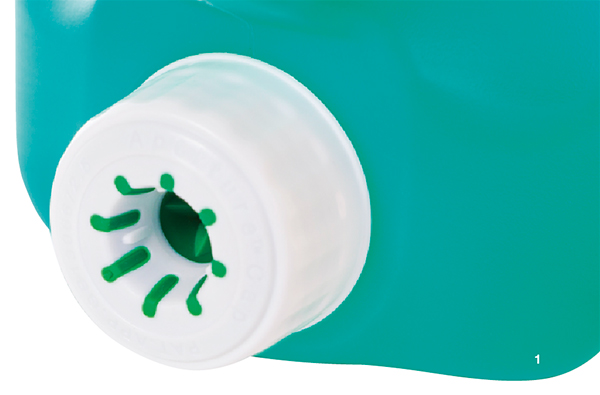
Seeking closure
These distinctions are not to say, however, that the UK’s annual retail packaging event (Packaging Innovations: NEC, Birmingham 24 – 25 February) wasn’t able to provide a showcase for some genuinely new concepts in their embryonic stage of development; not least those that are focused upon improved functionality. Inevitably, of course, in providing added value they mostly come at a commensurate higher price.
The Aperture twin-shot injection moulded PP and TPE irremovable cap closure is a simple yet effective controlled dispensing method designed to ensure the safe handling of liquids, preventing misuse, pilferage, contamination and waste, says its inventor Mark Bradley.
«Every container in the world uses a screw-cap, which invariably also has to be tamper-proof but which you can also take off - and which if there’s a problem you can open to give the option to free-pour with the inevitable potential for wastage or mis-dosing. The same risk applies to containers that use a dispenser (viz. 60 per cent of all ten-litre drums) that’s designed for controlled use. So we’ve produced a screw-cap that once it’s attached cannot be reopened, detached or removed, and through which the contents can only be extracted by use of a syringe».
Aperture’s unique patented seal remains intact in transit and storage, and prevents leakage even when external pressure is applied, says Bradley. The closure is applicable to any type of application and is likely to cost around 10 per cent more than a standard cap.
Brand new thinking.2
Facilitating rather than restricting accessibility is the new Reseal It easy-open and re-sealing system (2) recently launched by UK-based Pulse Flexible Packaging. Available for both vertical and horizontal FFS equipment, the solution is a two-layer laminate structure that incorporates label apply that’s cut from underneath enabling a simple peel and swipe motion to open and subsequently re-close the pack.
Providing tamper evidence for consumer safety and a guaranteed hermetic seal for enhanced and extended product freshness, Reseal It has anecdotally been rated by Nestlé as the best open and re-closable system they’ve ever used. In probably doubling or even trebling the overall packaging cost such an accolade comes at a price. However, points out a spokesperson for Pulse: “from a functionality perspective it works extremely well. When you weigh up the cost of the packaging involved versus the cost of the product it’s only a fraction of the retail selling price so only represents a notional uplift on consumer spend.”
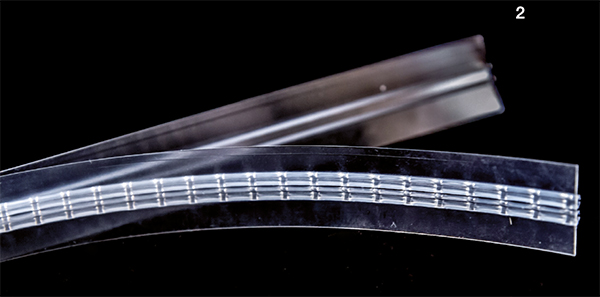
One of the UK’s leading distributors of packaging films incl. BOPP, PET, CPP. Heat shrink, rigid and PET, PlasFilms has extended its representation of the the Japanese manufacturer C.I. Kasei’s SANZIP range of reclosable zippers through the introduction of SensoZIP: a reclosable system that provides both sound and tactile sensation in operation. Available as a double or triple type zipper and manufactured in LDPE, SensoZIP can be applied to any multi-layer structure providing the sealing layer is also PE and heat-sealed.
Initially being targeted at the pet-food sector where high barrier properties are a pre-requisite, the SensoZIP is likely to cost twice the price of standard zipper closures. In mitigation, however, the company points out that whilst most innovations start out at the top-end of the market they tend to work their way down into the volume area with 5 - 10 years.
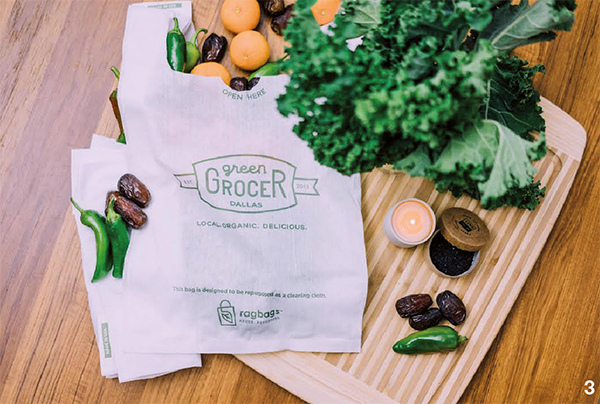
Act naturally
Developed in response to packaging legislation being passed in the US that either taxes retail paper bags or seeks to eliminate their oil-based PP counterparts, Ragbags are produced from spun-laced non-woven cellulose fibre (also incorporating a PLA adhesive) that’s totally BPI certified (Biodegradable Products Institute) compostable (3). Their unique point of difference, however is that they are designed to double up as reusable cleaning cloths, says developer Eric Grossman.
«The Ragbag absorbs ten times its weight in liquid, so ultimately having used it a few times as a shopping or storage bag it can then be repurposed as a cleaning rag to wipe up spills etc. In that capacity can be effective on up to at least six separate occasions as it absorbs 8.4 times as much as a paper towel»
Patented in the US and the EU, each Ragbag can carry over 7 kilos in weight. Cost, however, could be an issue. Whilst a standard PP bag in the US would cost around 2 cents, the Ragbag could be ten times as much and 50 per cent more than its paper equivalent.
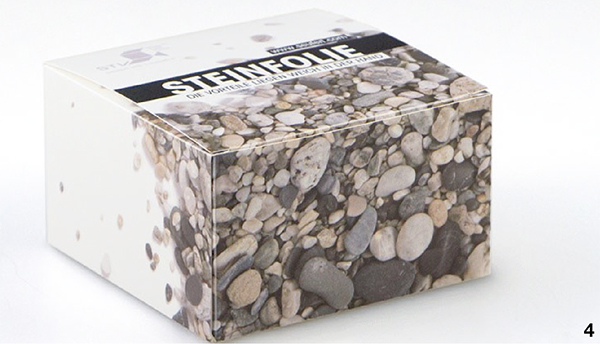
Brand new thinking.3
Whilst the Ragbag scores a pricey but arguably viable tick in the green premium box, the prospects for another new contender within the greater sustainability space are less clear-cut.
German manufacturer of transparent promotional packaging Seufert is trialling the use of eco-friendly stone film to supplement polyethylene in small folding cartons. Its opaque characteristic makes it suitable for offset litho or screen over-printing (4).
Sourced from Taiwan, stone film is manufactured from waste and recycling material. It contains up to 60% - 80% rock powder (calcium carbonate), which occurs as residual product in the building industry and in quarries. Seufert is blending it with oil-based PET on a ratio of 60:40 percent, claimed to be as stable as the usual 100 per cent PET solution whilst incurring only a ‘reasonable’ uplift in price. The Company was unable to confirm, however, whether the PET / stone film blend can be managed within existing waste recovery streams.
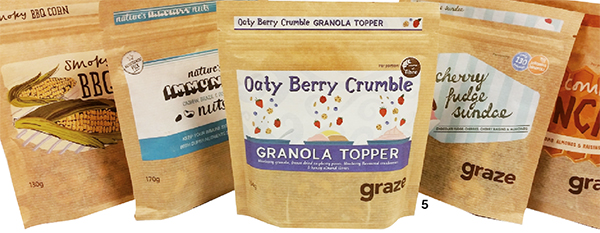
Up front and personal
Following onto its impact within the labelling sector via the now global ‘Share a Coke’ initiative that got its initial impetus in Australia, the possibilities afforded by digitally printed on-pack customisation is rapidly extending to other formats.
UK-based Xeikon printer CS Labels is exploring new narrow-web options through the development of a personalised stand-up pouch service, originally trialled in conjunction with the online health foods retailer Graze.
Meanwhile, Glossop Cartons - the world’s first adopter of the Highcon Euclid production speed cutting & creasing system - has also installed a Xeikon 3500 press to support a new web to print customised carton service with minimum quantities of 500 off. The increasingly blurred demarcation lines between the different processes formed the basis of one of the show’s regular highlights the ‘Big Print Debate’, whose theme this year was: ‘Can analogue print survive in a digital world?’ Whilst much of the ensuing discussion was at pains to flag up the respective merits of both conventional and digital technology, when asked which they would recommend as a viable investment for a new entrant into the packaging print industry the entire panel unanimously plumped for inkjet.
The most telling endorsement for digital came from Doug Hutt, global packaging manager for the giant brewery SAB Miller (recently merged with AB InBev): The millennial generation of consumers reflect a narcissistic society in that it’s very much about ‘look at me’. People want to have a one on one conversation and the way that you can do that effectively and generate value is with digital.
«So if you’re looking at where you want to invest money for the future, then you’ve got to do it for the consumer in ten years time. Right now that means my ten year-old son, who knows how to work an iPad far better than I do, fixes all the electronic items, and has been brought up completely in a digital environment. When his generation gets to twenty with a lot of disposable income anything that isn’t touch, swipe, or voice responsive is going to be a disappointing experience. Our technology solutions have to complement what the consumer needs and expects».
Des King
The Write Stuff




















